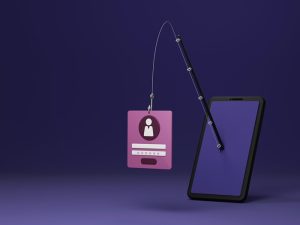As organizations modernize their cybersecurity strategies, the focus often shifts toward cloud security, advanced malware defense, and remote work protections. However, some of the oldest security gaps remain surprisingly relevant, one of them being the use of internet cafes.
Internet cafes still exist in many parts of the world, providing public access to the internet for travelers, remote workers, gamers, and freelancers. While they offer convenience, they also represent an often-forgotten attack surface. Shared computers, public Wi-Fi, and anonymous access create the perfect environment for data leaks, malware infections, and credential theft. For businesses managing remote teams, this exposure can introduce risks that go unnoticed until it’s too late.
The Hidden Cyber Threats Lurking in Internet Cafes
When most people think about cyber threats, they imagine hackers attacking corporate servers or ransomware locking up company data. However, one of the easiest entry points for cybercriminals is far less sophisticated: public computers and unsecured networks, like those found in internet cafes. These environments are built for convenience, not security, and they often lack basic protections such as regular patching, antivirus monitoring, or network segmentation. The problem becomes even more critical when employees, whether knowingly or out of necessity, use these public resources to access corporate systems or manage sensitive information. Without proper security awareness, one quick log-in at a public terminal can expose confidential data, compromise accounts, and create backdoors into an organization’s infrastructure. Here’s why internet cafes remain a significant cybersecurity concern:
- Keyloggers and Spyware: Public computers may be infected with keyloggers or spyware that silently capture every keystroke, stealing usernames, passwords, and credit card details.
- Session Hijacking: Browsers in internet cafes might store cookies or active sessions, allowing the next user or an attacker to hijack personal or corporate accounts.
- Untrusted Network Traffic: Cafe Wi-Fi often lacks proper encryption, making it easy for attackers to intercept data using packet sniffers or fake access points.
- Outdated Software: Many internet cafes run outdated operating systems and browsers, leaving users exposed to unpatched vulnerabilities.
- Residual Data Storage: Files or screenshots left behind on shared machines can be accessed by the next user, potentially exposing confidential information.
- Insecure Browser Extensions: Public terminals may have browser extensions or plugins installed that capture data or inject malicious ads.
- Rogue Device Risks: USB ports on public machines are also a concern, as attackers can install malware via infected flash drives.
How Organizations Can Address This Overlooked Risk
Many businesses invest heavily in endpoint protection and cloud security but forget to consider where employees actually access company resources. With the rise of remote and hybrid work, people often connect from airports, hotel lobbies, coworking spaces, and yes, internet cafes. These public access points create security gaps because they operate outside of IT’s control, making them difficult to monitor or secure. Policies often focus on in-office devices and personal laptops, but public machines and networks fall into a gray area. If companies don’t proactively address these risks, they may find themselves vulnerable to breaches that originate from a completely unmanaged environment.
Conclusion
Internet cafes may seem outdated, but they still pose modern security risks. In the age of hybrid work and global travel, organizations need to expand their threat awareness beyond cloud and endpoint security to include the public environments employees may still use.
At Terrabyte, we help organizations build security strategies that cover every attack surface, including the ones that are often forgotten. Protecting your data starts with understanding where it could be exposed, even outside the office.




